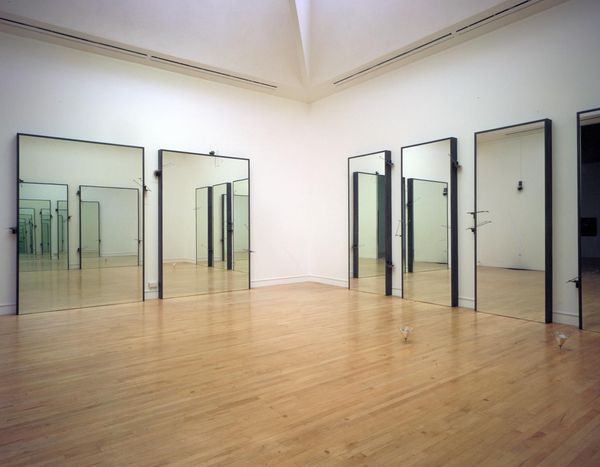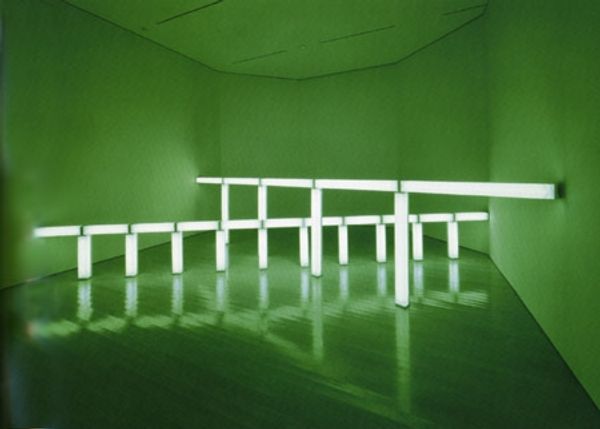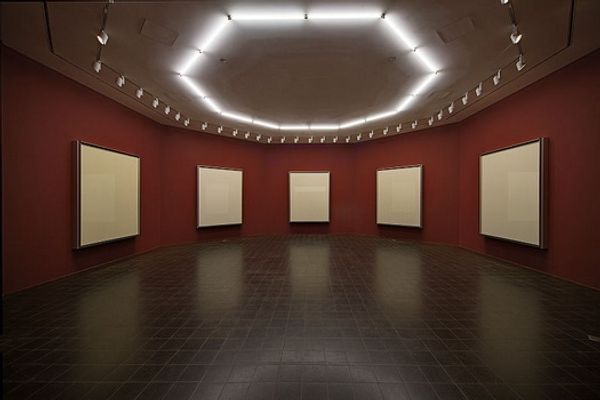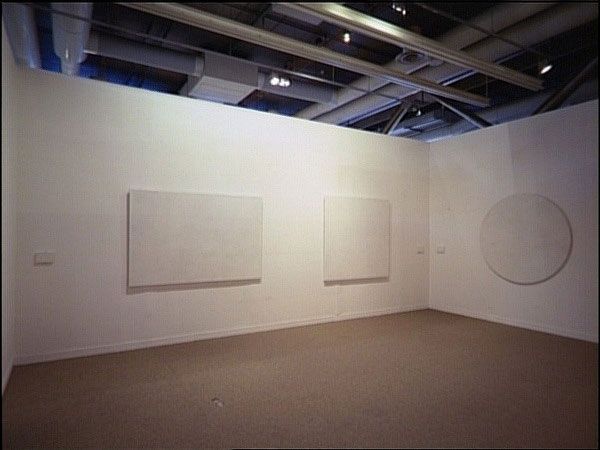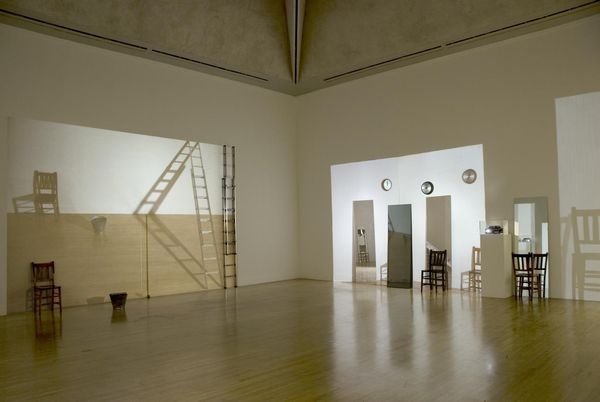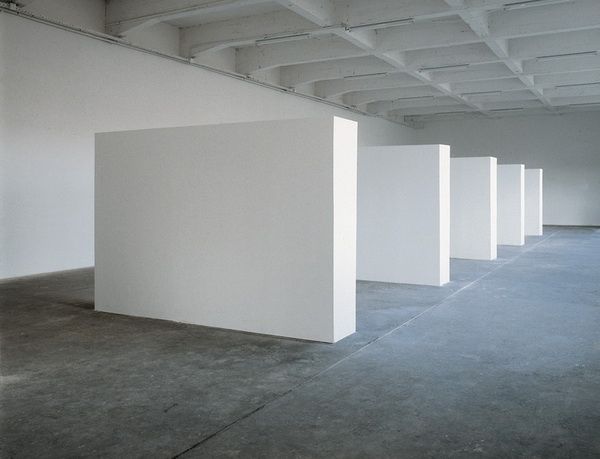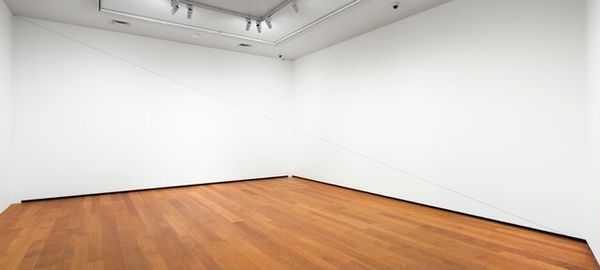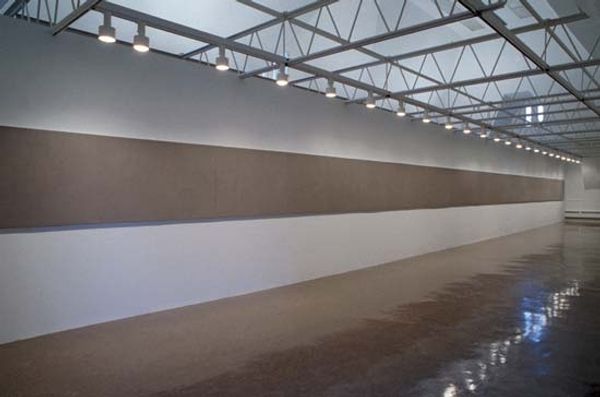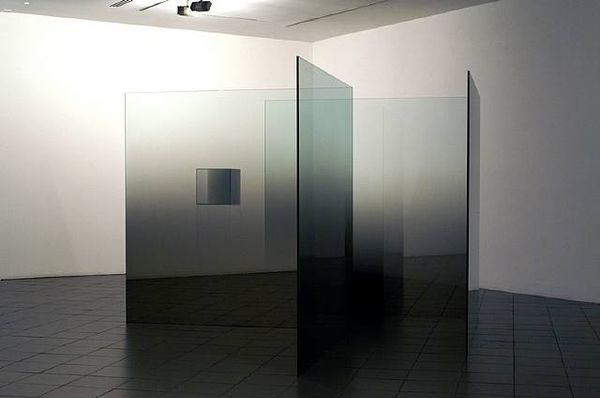
site-specific, installation-art
#
conceptual-art
#
minimalism
#
site-specific
#
installation-art
Copyright: Robert Morris,Fair Use
Curator: I’m immediately struck by the optical playfulness; the mirrored planes creating an endless vista. It’s unsettling yet somehow serene. Editor: Today we’re considering Robert Morris’ "Untitled (Williams Mirrors)," created in 1977. This work exemplifies his engagement with Minimalism and Site-Specific art, focusing on how our bodies experience space and matter within institutional frameworks. Curator: Absolutely. The strategic placement of the mirrors manipulates the gallery space, fracturing our perception. The viewer becomes both subject and object. Did Morris intend to blur those boundaries within the gallery setting, do you think? Editor: Undoubtedly. Morris consistently challenged the role of the gallery. He presented raw materials, often disrupting conventional viewing habits. In "Williams Mirrors," we see this quite literally. The museum’s architecture, the polished floorboards, the viewer… everything becomes a part of the artwork's extended field. It comments directly on the act of spectatorship. The manufacturing and distribution processes of plate glass also must have contributed to his conceptualizing such artwork. Curator: The choice of mirrors, the installation itself, demands that we acknowledge the industrial process behind it, its journey from production to the museum wall. It feels decidedly cool, intellectual, and lacking in personal expression. A purposeful rejection, perhaps? Editor: His mirrors force a direct encounter with the gallery’s mechanics and power structures. The repetitive reflections create a sort of feedback loop, implicating the viewer in this constructed reality. One wonders if contemporary viewers felt empowered by such an exhibition. Curator: I can almost see a dialogue, back in 1977, debating the art institution's role as a mirror, reflecting and shaping societal tastes and values. Thanks for the additional historical layers and material considerations, illuminating its production and reception then, and now. Editor: A powerful reflection on both the art object and the systems that surround it, indeed.
Comments
No comments
Be the first to comment and join the conversation on the ultimate creative platform.

